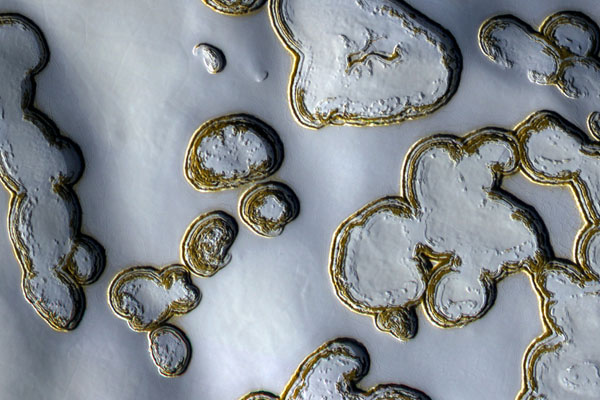You know it is cold when the very air starts to freeze.
This is what happens in a Martian winter when no sunlight reaches the polar region. It grows so cold that the atmosphere, mostly carbon dioxide, begins to freeze and fall to the ground as snow. Frozen carbon dioxide, dry ice, accumulates into a permanent polar cap. While the extent of this polar cap waxes and wanes with the Martian seasons, there is always some ice.
The image below, taken by the HiRISE camera aboard the Mars Reconnaissance Orbiter shows of a section of the southern permanent polar cap. Late summer has caused much of the polar cap to sublimate (convert back to gas), exposing some of the rock under the ice.
Here much of the terrain is shaped by the annual freeze and thaw cycles. These pits are probably the result of these cycles and are about 60m (200ft) across. Soon the region will return to the darkness of winter and the pits will be re-buried in the ice.

